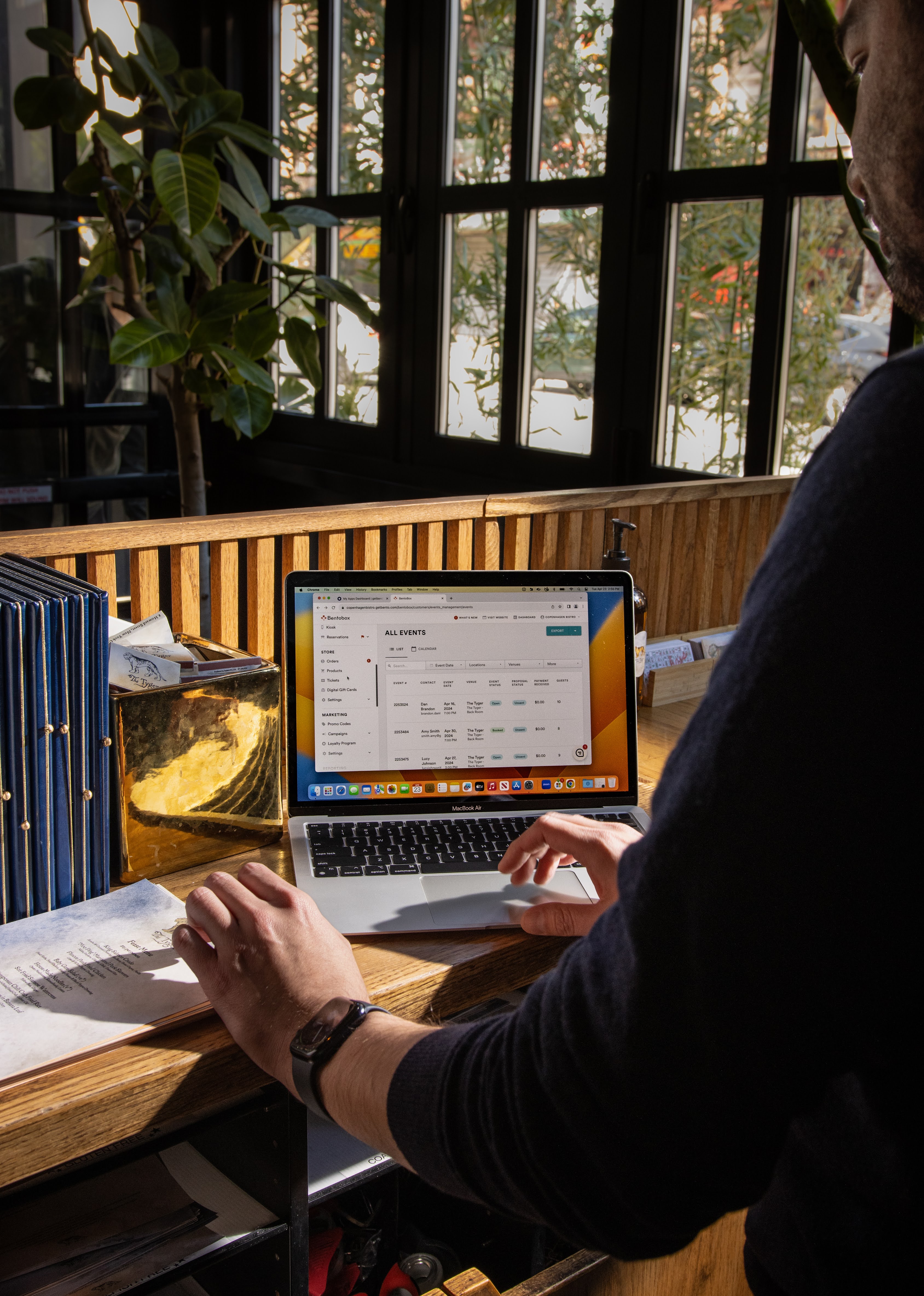Operations
How Restaurants Can Start In-House Delivery
May 27, 2021
The benefits and challenges of in-house delivery with steps on how to get started.
As restaurants happily invite diners back inside their doors, restaurants should take a moment to access their delivery operations as the demand for delivery is only set to increase. Third-party delivery services can take much of the burden away from restaurant operators but at a cost that impacts the restaurant’s bottom line. For small businesses that focus on delivery, starting in-house delivery operations has many advantages. But first, operators will need to assess if it’s good for their business before planning and ultimately executing. We outlined the advantages and steps to starting in-house delivery.
The Advantages of In-House Delivery
In-house delivery has its benefits but also comes with its challenges. Restaurants that explore in-house delivery benefit from eliminating third-party services and the heavy commission fees associated with them. Similarly, restaurants ultimately save money in the long term, as maintaining a delivery team on staff can be cheaper than employing third-party service providers on average.
Other benefits that come with going in-house are that restaurants retain full control over the to-go experience, from ordering and meal prep to delivery and payment. Furthermore, restaurants retain customer information and data that third-party platforms typically keep. This helps restaurants remarket and connect directly with guests who are loyal to the brand and want to support the business. After all, nearly two-thirds of current delivery customers prefer to order directly from the restaurant versus a third party.
But even with the benefits that come with going in-house, there are some small hurdles. These include the restaurant bearing the upfront costs to hire, train, acquire the necessary permits and insurance, and any other additional costs that come with delivery operations. Restaurants will need to consider the benefits and challenges of in-house delivery operations and how it fits into the overarching business strategy.
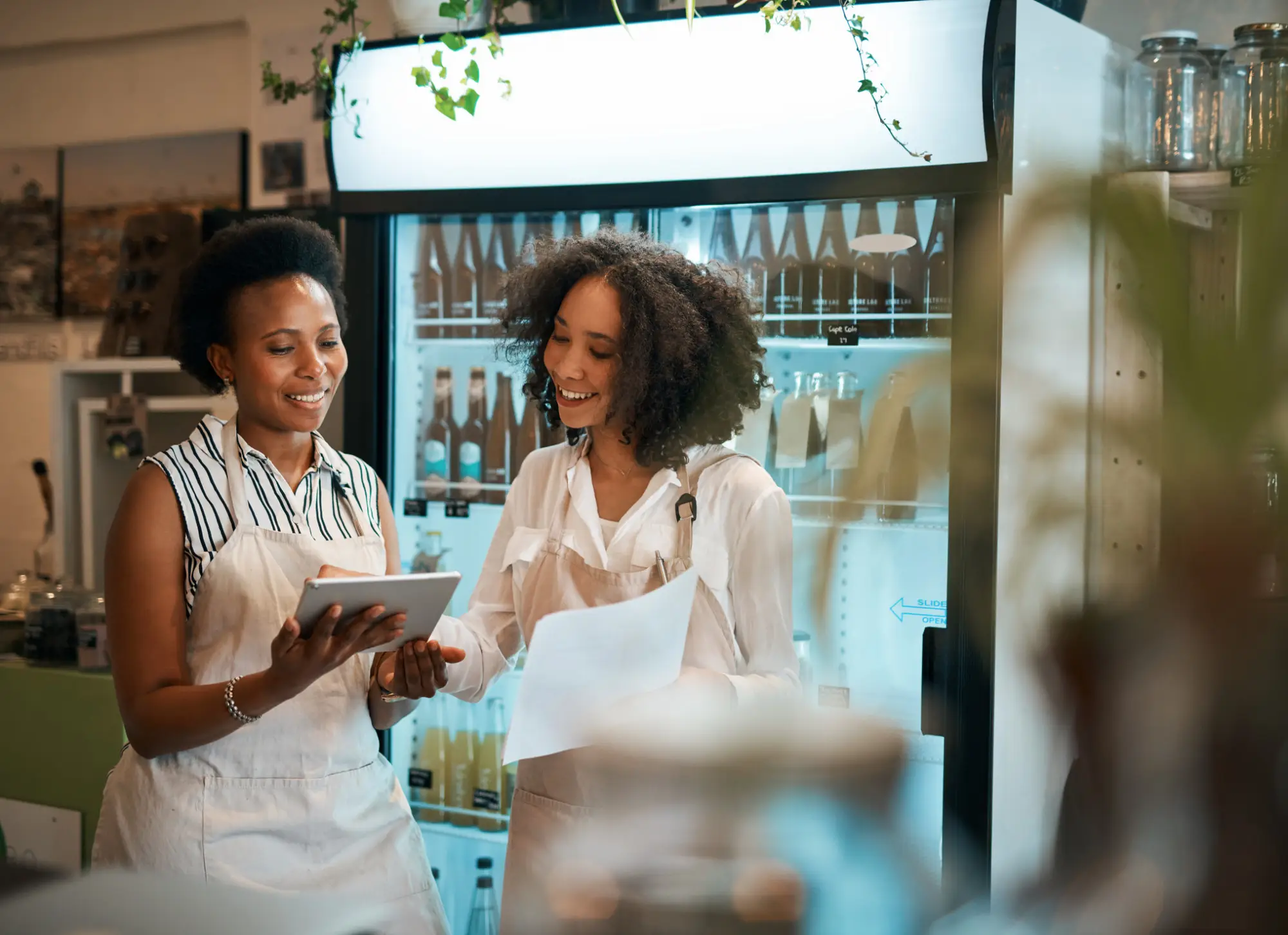
How to Start in-House Delivery Operations
There are several steps involved with starting in-house delivery operations. From conception to execution, let’s explore the path restaurants must take to start delivering in-house.
Research What Permits or Insurance Policies May Be Needed
Typically, restaurants only need general business licensing as well as a food-vending license to start in-house delivery. Depending on the municipality in which the business exists, operators may also need a food-handling permit. Restaurants can obtain information about the licenses needed from their local city governments.
For example, existing full-service restaurants in New York City will need to have the mandatory Food Service Establishment Permit. A Food Service Establishment is a place where food is provided for individual portion service directly to the consumer, whether the food is provided free of charge or sold, and whether the food is consumed on or off the premises. The application fee costs $280 and is renewed annually.
For new restaurant openings, New York City put together this helpful starter guide to understanding what licenses and steps are needed to fully open a new establishment.
While licensing and permits are less of a concern for an existing business, additional insurance coverage outside of typical on-premise operations is needed. Restaurants must first determine the method of delivery. Will couriers be driving vehicles? Bikes? For example, if a restaurant decides to offer in-house delivery services, they can either:
Provide their own vehicle fleet to fulfill deliveries
Rely on employees to use their own vehicles for delivery.
Of these two scenarios, both come with different risks and therefore needs.
Employers must put employee safety and liability above all else. Regardless of how a restaurant chooses to deal with transportation, vehicle coverage is a must. Here are examples of what restaurants can expect if they offer transportation for employees to fulfill deliveries.
Car Insurance: An owned or non-owned auto insurance policy that protects from driver liability risks in the case of auto-related accidents.
Business Owner Policy: A business owner policy (BOP) combines business property and liability insurances into one. This protects against general liability and property damages.
Workers Compensation: This type of policy covers the delivery driver in the event of a work-related injury. It provides for payment of medical expenses and lost wages and can vary from state to state. Operators will need to assess the workers’ compensation laws in their locality.
Employee-owned Vehicles: If a restaurant decides to have employees provide their own transportation, the restaurant will need non-owned auto insurance coverage. This type of auto insurance protects the restaurant from liability for damages caused by employees while on the job. Any injuries the employee incurs should be covered by a restaurant’s worker’s compensation policy.
Set Delivery Zones
Restaurants that offer in-house delivery services will need to set limits and boundaries that they’re able to deliver to. This can be set up in tiered zones. For example, if a restaurant is located in a major metropolitan area, they can select a zone within a half-mile radius and offer free delivery within that zone. For deliveries outside of that zone, an additional delivery fee can be added to the order.
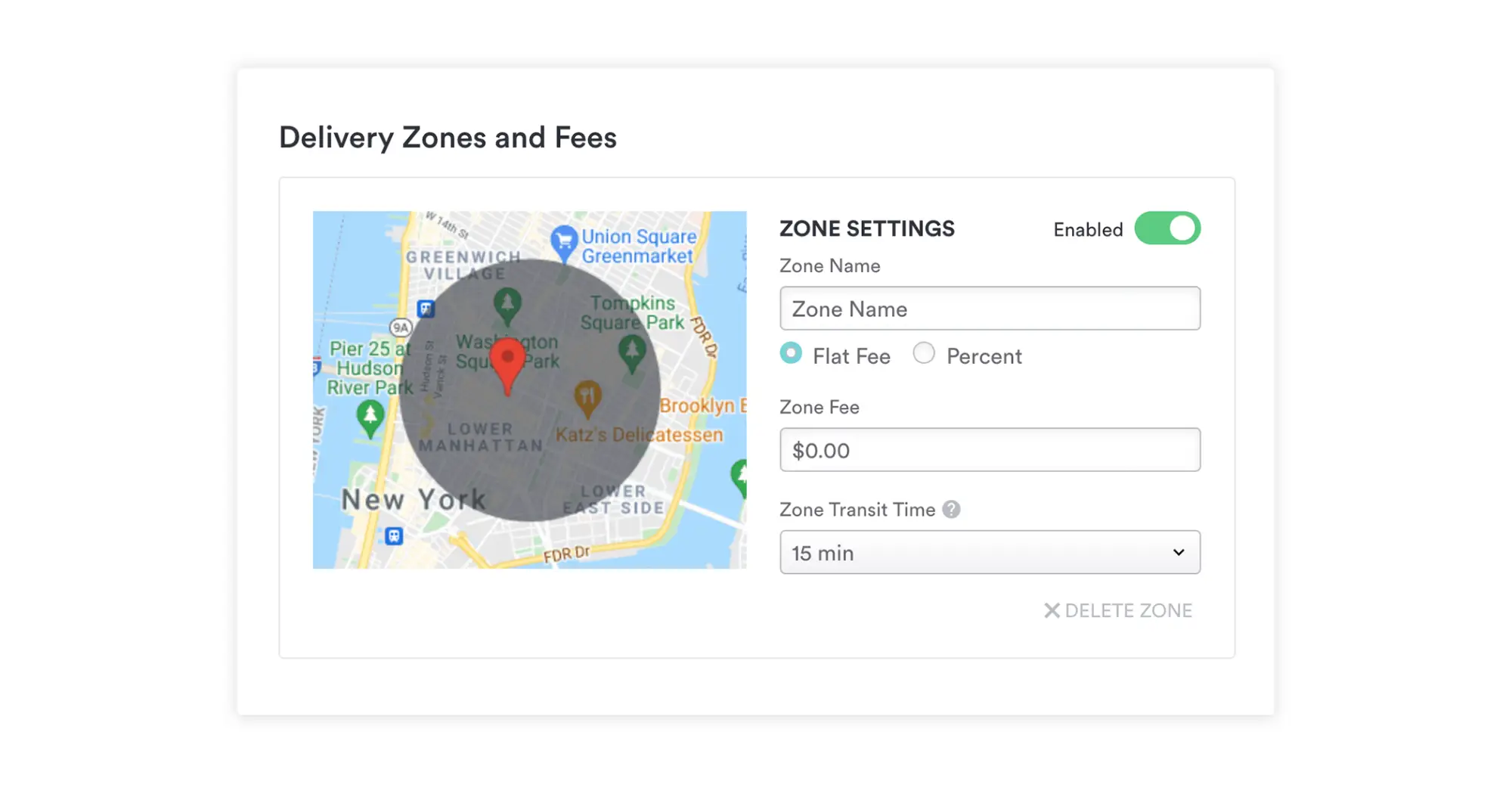
An example of how restaurants can set tiered delivery zones with Bento Ordering
Online ordering platforms like Bento Ordering, allow restaurant operators to set and edit their own delivery tiered delivery zones simply in the backend of the platform. If there is increased demand for deliveries outside of the set zone, it’s easy for a restaurant to alter its delivery zone and charge a small fee for convenience.
Provide Apps for Navigation and Directions
To avoid hiccups and optimize for successful deliveries, restaurant operators will need to provide the best technology to help their staff get the job done. This includes apps that help employees navigate their way to a destination. Restaurants that elect to go direct will need to use services like Waze or Google Maps to get from point A to point B and back. Waze is a hands-free, turn-by-turn navigation app that accounts for real-time, crowdsourced data to offer the quickest route to a destination.
While Waze and Google Maps are two viable options, restaurant operators can take advantage of powerful delivery management software like Tookan. Tookan can empower restaurants with optimized routes, automation, real-time tracking and efficient movement of goods for their business. Software like Tookan automatically allocates food deliveries with optimized routes that enable quick planning for drivers.
Onfleet is another example of powerful delivery management software that makes it easy for restaurants to manage their delivery drivers. Onfleet includes intuitive smartphone apps for delivery drivers, a real-time web dashboard for restaurant operators, and automated SMS notifications and driver tracking for diners.
Other delivery management software includes:
Visit Capterra.com to view the complete list to see what’s right for your business.
Hire and Train Staff for Delivery
At this point, restaurants are almost ready to start making deliveries. But first, they must hire and train their entire staff. When hiring delivery staff, there are a few things to take into consideration:
Restaurants should consider candidates with a history of fulfilling delivery orders
Will the restaurant provide access to a vehicle or will the employee be responsible for providing their own transportation?
Make sure the driver has a valid driver's license and a clean driving record
If the driver provides their own transportation, make sure they have auto insurance prior to being hired
Once the perfect candidate(s) is found, restaurants will need to get their entire team up to speed on new delivery operations. Front-of-house employees, the kitchen and delivery staff must all be in congruence to ensure smooth operations. This involves a thorough understanding of how orders are placed by guests, routed and ultimately fulfilled across the entire team. Operators can download the free restaurant employee training manual from 7shifts for insights into how to successfully train new restaurant staff.
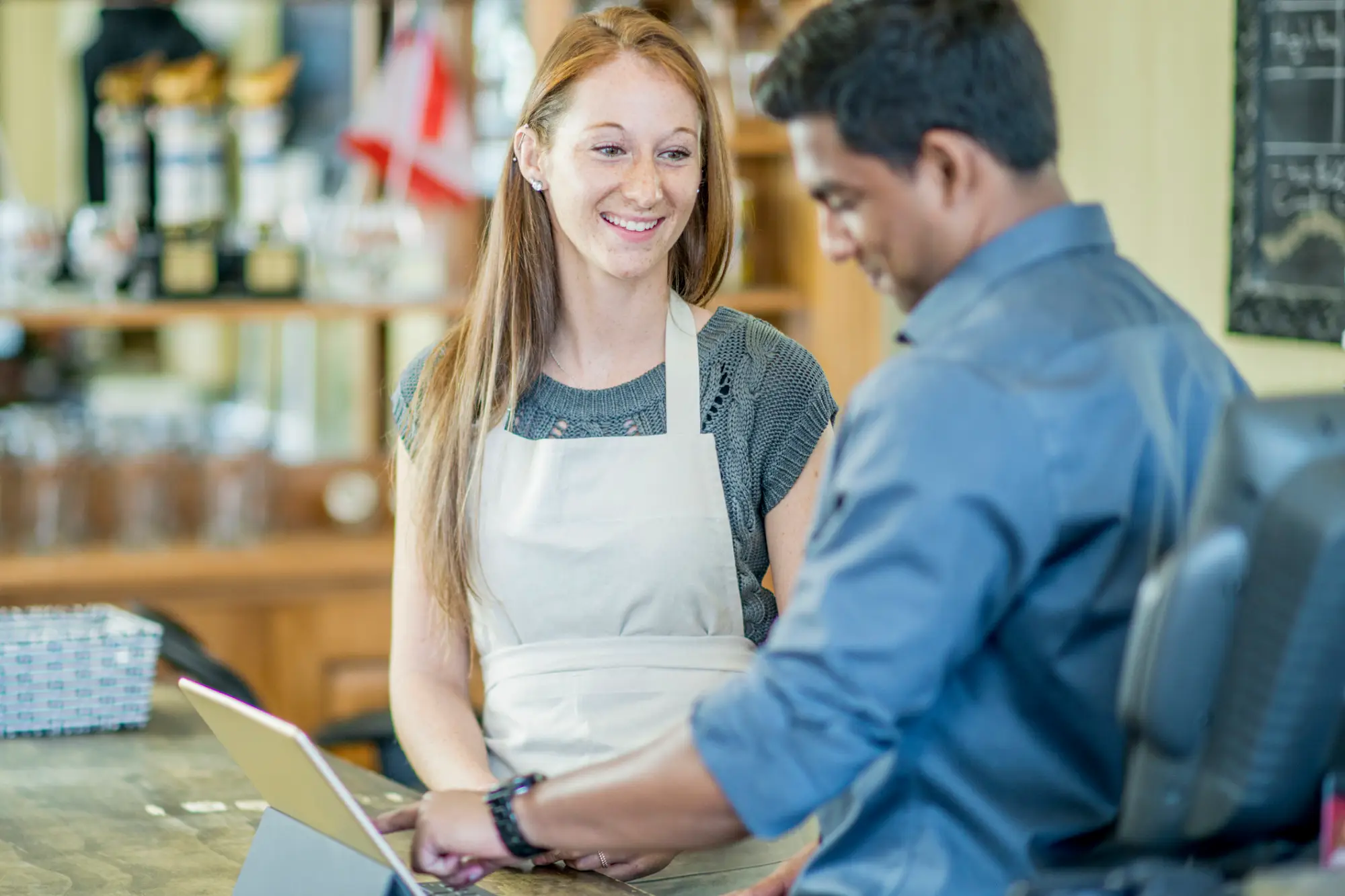
Get the Technology to Streamline the Ordering Process
Once restaurants obtain the necessary permits, licenses and insurance needed for delivery operations, they’ll need to look at in-house operations to determine how orders will be placed, prepared, packaged and ultimately fulfilled. How guests place orders and are logged and fulfilled, requires a delicate balance between systems operations. For example, there are several ways diners can order for delivery: via phone, a third-party marketplace or through a direct online ordering system.
By Phone
All restaurants should have a phone number so that guests can reach the restaurant for any questions or inquiries, but also to place orders. Guests that elect to place orders over the phone will need to provide payment and their address for delivery. From there, employees must manually input the order, payment and delivery information into the POS system to kickstart the process. This method is very manual and requires close attention to details so that orders are successfully delivered to the customer.
Online Ordering Systems
While guests may elect to order over the phone, it’s much less common now thanks to online ordering platforms. Restaurants must do research into the types of online ordering platforms they’ll implement for guests to place orders through. While there are several options available, direct online ordering is a preferred solution for many restaurants around the nation.
What is Direct Online Ordering?
This is the most flexible and cost-effective option for restaurants. Restaurants can offer online ordering through their restaurant website for pickup or delivery. Platforms like Bento Ordering, allow guests to order online through an intuitive, best-in-class experience that puts the brand first. For restaurants, offering online ordering directly through their website or linking through Google My Business, saves them from unnecessary and burdensome fees that come with third-party marketplaces such as Grubhub or Seamless — even when fulfilling orders in-house. It also gives the restaurant full control over the delivery process.
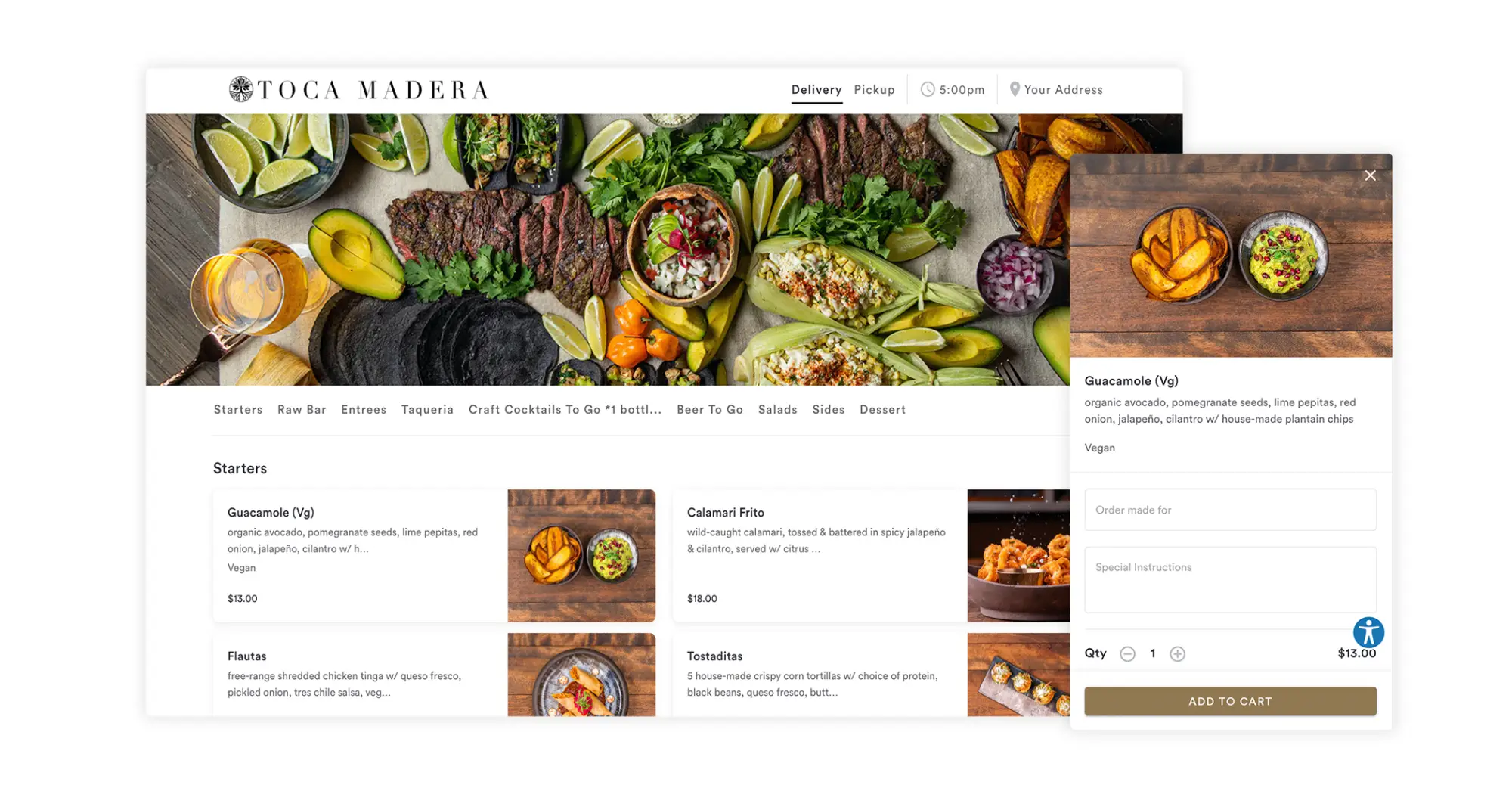
An example of Toca Madera’s Bento Ordering experience
Bento Ordering lets the restaurant easily select and control the delivery area. If a restaurant chooses to widen its delivery coverage, it’s simple and intuitive to change the delivery map in the BentoBox backend. Even further, Bento Ordering lets the restaurant charge delivery fees on a tiered structure based on a delivery radius. For example, a restaurant can offer free delivery for a certain area and then anywhere outside of that area for a fee. Some restaurants elect to only deliver within a certain window of time. Bento Ordering lets the restaurant control these hours separately from allowing online orders for pickup.
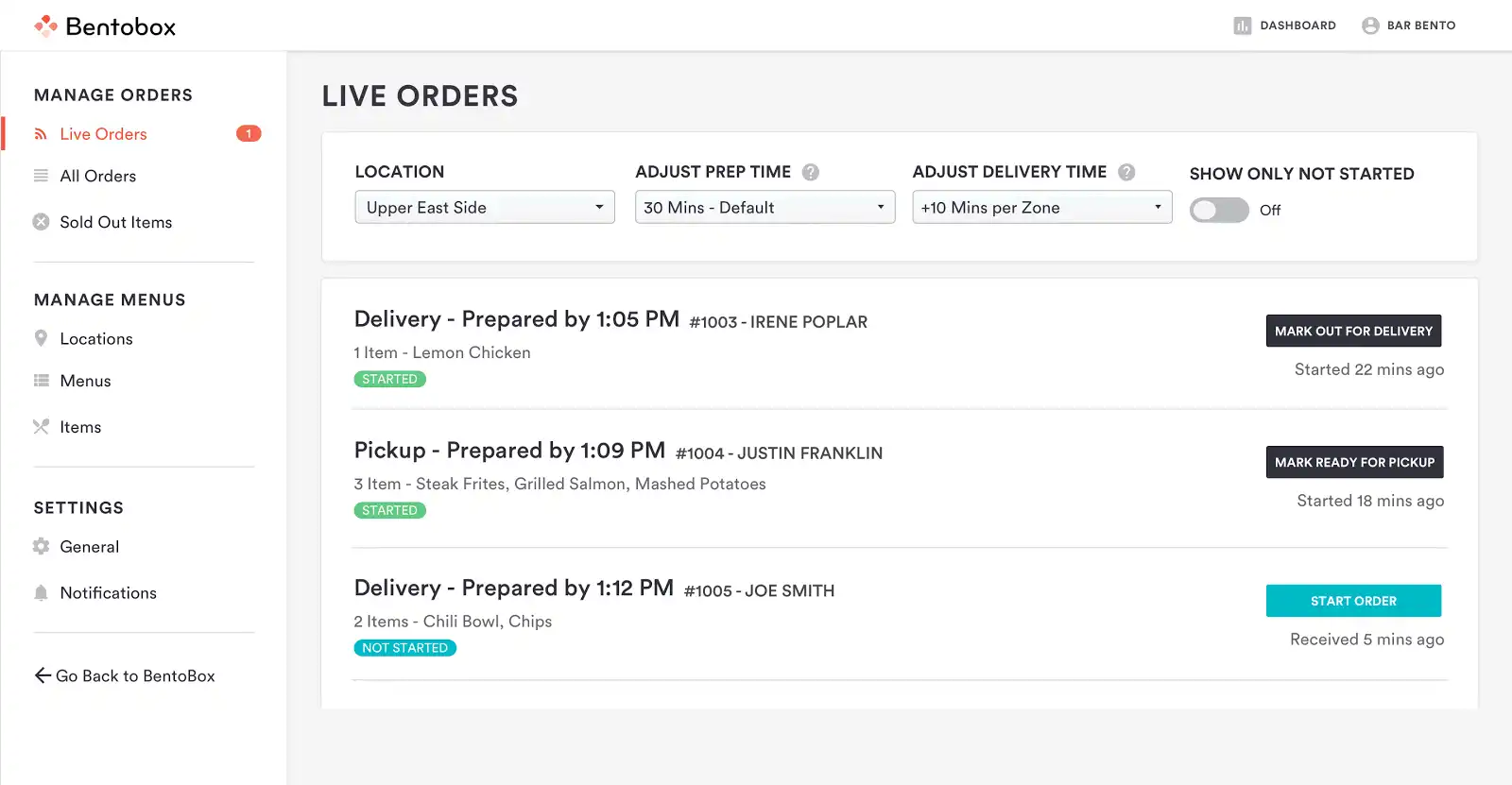
An example of how restaurants manage delivery orders through BentoBox
Promote Delivery Across The Website, Social Media, Email and In-store
The last step before restaurants can start delivering is to market their newly cemented operations to guests. Restaurants should detail their new offering on the website, social media channels, in marketing emails and even by word of mouth to on-premise guests.
For example, restaurants can use homepage alerts to notify website visitors that they now offer in-house delivery. The alert should include a call-to-action to start an online order for delivery.
Alternatively, restaurants can use social media and marketing emails to keep guests informed on the latest offerings. Calling out new in-house delivery operations will entice loyal customers who want to support their favorite restaurants by engaging directly. And for restaurants using customer loyalty programs like Repeat Rewards, incentives like free delivery and discounts will drive engagement and repeat orders.
Start Delivery!
Now it’s time to get started. In-house delivery operations have major benefits for restaurants that want to cut down on costs, keep operations in-house and control the full guest experience, from ordering and meal prep to fulfillment. Restaurants can learn more by reaching out to their Customer Success Managers or talking with a BentoBox specialist today.
Recommended
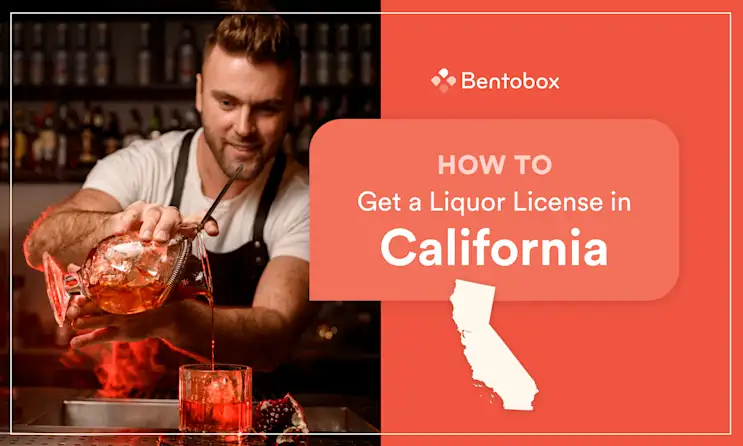
New Openings
How to Get a Liquor License in California
August 2, 2022
Everything restaurants need to know about serving alcohol in the Golden State.
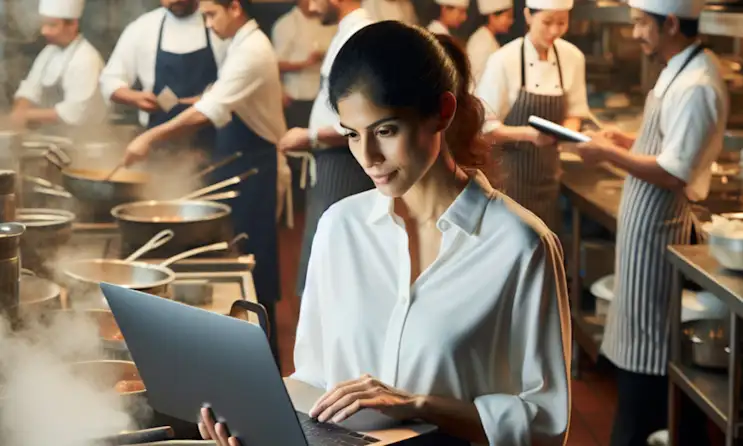
Marketing
How Restaurants Can Prompt AI Generators
September 26, 2024
Learn how to save time and get better results from generative AI, such as BentoBox's Magic Image and Flexible Text, in this quick guide.
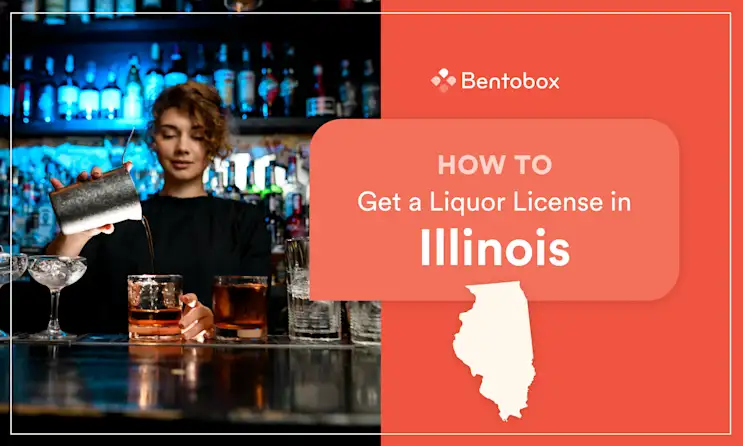
New Openings
How to Get a Liquor License in Illinois
July 27, 2022
Illinois regulates at both the local and state level. Here’s what you need to know in order to successfully secure a liquor license.
